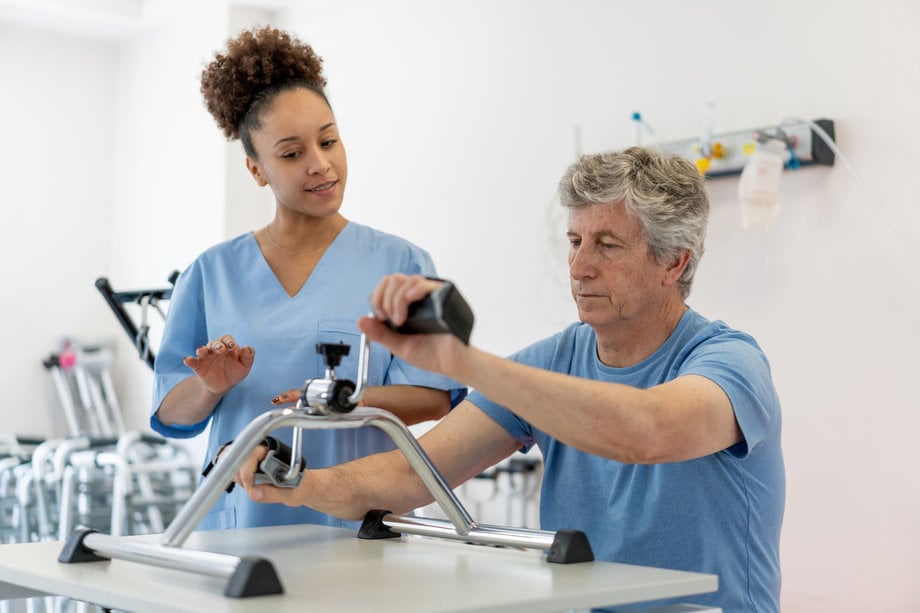What Is the Role of Occupational Therapy in Pain Management?

Occupational therapy is a discipline that aims to enhance individuals’ ability to engage in daily activities and improve their overall well-being. In the context of pain management, occupational therapy plays a crucial role in addressing the physical, emotional, and mental aspects of pain.
This article explores the fundamental principles of occupational therapy, examines the impact of pain on daily activities, and discusses how occupational therapy can effectively address pain through various strategies.
Additionally, it highlights the role of occupational therapy in the management of chronic pain and emphasizes the importance of collaboration with occupational therapists to achieve comprehensive pain relief.
Key Takeaways
- Occupational therapy plays a crucial role in improving daily functioning for individuals with chronic pain.
- Occupational therapists use a variety of techniques, such as sensory integration therapy and therapeutic exercises, to promote independence and participation in children.
- Occupational therapy addresses both physical and emotional aspects of pain management, offering physical therapy options, alternative pain relief methods, and personalized interventions for emotional well-being.
- Strategies for managing pain include activity-based interventions, adaptive equipment, lifestyle modifications, and purposeful activities, all aimed at alleviating pain symptoms and enhancing overall well-being.
Understanding the Basics of Occupational Therapy
The basics of occupational therapy encompass the assessment and treatment of individuals’ abilities to perform everyday activities in order to facilitate their overall well-being. Occupational therapy techniques for children involve the use of play and purposeful activities to enhance their physical, cognitive, and social skills. These techniques may include sensory integration therapy, therapeutic exercises, and adaptive equipment to improve their ability to engage in daily tasks. Occupational therapy for children aims to promote independence and participation in activities at home, school, and in the community.
On the other hand, occupational therapy also offers numerous benefits for seniors. It focuses on maintaining and improving their ability to perform activities of daily living, such as bathing, dressing, and eating. Occupational therapists may provide strategies and modifications to the environment to enhance safety and independence. These interventions may include home modifications, assistive devices, and training in energy conservation and joint protection techniques.
The Impact of Pain on Daily Activities
Chronic pain significantly impairs an individual’s ability to engage in daily activities. This includes work performance, as pain can limit physical and cognitive abilities necessary for productivity. Occupational therapy plays a crucial role in improving daily functioning for individuals with chronic pain.
Here are four key ways in which occupational therapy can address the impact of pain on work performance and overall functioning:
- Pain management techniques: Occupational therapists can teach individuals strategies to manage and reduce pain, such as relaxation techniques, mindfulness, and pacing activities.
- Activity modification: Therapists can help individuals modify their work tasks and environment to reduce pain and improve comfort, such as adjusting workstation ergonomics or implementing frequent breaks.
- Energy conservation: Occupational therapists can teach individuals ways to conserve energy and prevent fatigue, enabling them to sustain work performance despite pain.
- Adaptive equipment and assistive technology: Therapists can recommend and provide guidance on the use of assistive devices and technology that can facilitate daily activities and enhance work performance.
How Occupational Therapy Can Address Physical Pain
Physical pain can be effectively addressed through the implementation of various techniques and strategies by occupational therapists. Occupational therapy offers a range of physical therapy options and alternative pain relief methods to help individuals manage their pain and improve their overall quality of life. These techniques aim to reduce pain, increase mobility, and enhance functional abilities.
One effective approach is the use of modalities, such as heat or cold therapy, ultrasound, or electrical stimulation, to alleviate pain and promote healing. Additionally, occupational therapists may incorporate manual therapy techniques, including joint mobilization, soft tissue mobilization, and myofascial release, to reduce pain and improve range of motion. They may also utilize therapeutic exercises and activities to strengthen muscles, improve flexibility, and enhance overall physical function.
Occupational therapists also play a crucial role in educating individuals about self-management strategies, such as relaxation techniques, stress management, and ergonomic modifications. By empowering patients to take an active role in their pain management, occupational therapy helps individuals regain control over their lives and reduces their reliance on medication or invasive interventions.
In a study conducted by Jensen et al. (2019), participants who received occupational therapy interventions reported significant reductions in pain intensity and improved physical function compared to those who did not receive such interventions. This highlights the effectiveness of occupational therapy in addressing physical pain and its positive impact on individuals’ well-being.
To further illustrate the various physical therapy options and alternative pain relief methods employed by occupational therapists, the following table provides a comprehensive overview:
| Physical Therapy Options | Alternative Pain Relief |
|---|---|
| Modalities (e.g., heat/cold therapy, electrical stimulation) | Relaxation techniques |
| Manual therapy techniques (e.g., joint mobilization, myofascial release) | Stress management |
| Therapeutic exercises and activities | Ergonomic modifications |
Addressing Emotional and Mental Health in Pain Management
Addressing emotional and mental health is an essential aspect of comprehensive pain management. Chronic pain can have a significant impact on an individual’s emotional well-being, often leading to depression, anxiety, and decreased quality of life.
Occupational therapy plays a crucial role in addressing these emotional challenges by providing individuals with coping mechanisms and strategies to manage their pain effectively. Occupational therapists work with patients to identify and understand their emotions related to pain, and then develop personalized interventions to promote emotional well-being.
These interventions may include relaxation techniques, mindfulness exercises, cognitive-behavioral therapy, and stress management strategies. By addressing emotional well-being, occupational therapy helps individuals develop resilience, improve their ability to cope with pain, and ultimately enhance their overall quality of life.
Strategies for Managing Pain Through Occupational Therapy
This discussion will explore various strategies for managing pain through occupational therapy, focusing on three key points: activity-based pain relief, adaptive equipment for pain, and lifestyle modifications for pain.
Activity-based pain relief involves engaging in specific activities or exercises that aim to alleviate pain and improve function.
Adaptive equipment for pain refers to the use of specialized tools or devices that assist individuals in performing daily tasks with reduced pain and increased independence.
Lifestyle modifications for pain encompass changes in daily routines, habits, and self-care practices that can help manage and minimize pain levels.
Activity-Based Pain Relief
Occupational therapy interventions focused on engagement in purposeful activities have been found to be effective in managing pain. Activity-based interventions, which are non-pharmacological in nature, aim to alleviate pain symptoms and improve overall well-being. These interventions involve the use of meaningful and goal-directed activities to address the physical, cognitive, and emotional aspects of pain.
By engaging in purposeful activities, individuals are able to redirect their attention away from pain, increase their sense of control and self-efficacy, and enhance their overall quality of life. Activity-based interventions may include various approaches such as activity modification, graded activity, and activity pacing. These interventions can be tailored to the individual’s specific needs and preferences, allowing for a personalized and holistic approach to pain management.
Furthermore, occupational therapists play a crucial role in educating individuals about the benefits of activity-based interventions and empowering them to actively participate in their own pain management.
Adaptive Equipment for Pain
Adaptive equipment is a vital component of occupational therapy interventions for individuals experiencing pain. It is designed to assist individuals in completing daily activities and tasks with greater ease and reduced discomfort. The use of assistive devices can offer several benefits in pain management:
- Enhanced independence: Adaptive equipment enables individuals to perform activities independently, reducing the need for assistance from others.
- Increased safety: By providing support and stability, assistive devices help prevent falls and injuries during daily activities.
- Improved function: Using adaptive equipment can enhance an individual’s functional abilities, allowing them to engage in activities that may have been challenging due to pain.
- Reduced pain and discomfort: Assistive devices can offload stress on painful joints or muscles, minimizing pain and facilitating participation in meaningful activities.
- Enhanced quality of life: By enabling individuals to engage in activities they enjoy, adaptive equipment can enhance overall well-being and satisfaction.
Lifestyle Modifications for Pain
Lifestyle modifications have been found to play a significant role in reducing discomfort and improving overall well-being for individuals experiencing chronic pain. These modifications encompass changes in daily activities, exercise routines, and sleep patterns.
Activity-based pain relief strategies focus on engaging in regular physical activity and exercise to manage pain symptoms. Exercise has been shown to release endorphins, which are natural pain relievers, and can also improve muscle strength and flexibility.
Additionally, incorporating relaxation techniques such as mindfulness meditation and deep breathing exercises can help reduce stress and promote relaxation, which can in turn alleviate pain.
Furthermore, maintaining a balanced diet and managing weight can also contribute to pain management.
Overall, adopting these lifestyle modifications can provide individuals with chronic pain with a holistic approach to pain management and improve their quality of life.
The Role of Occupational Therapy in Chronic Pain Management
Chronic pain management involves the utilization of various therapeutic approaches, including those provided by occupational therapy. Occupational therapy techniques play a crucial role in holistic pain management approaches.
Occupational therapists focus on improving the functional abilities of individuals with chronic pain, enabling them to engage in meaningful activities and achieve a higher quality of life. They employ a range of interventions, such as activity modification, adaptive equipment prescription, and energy conservation techniques, to address the physical, psychological, and social aspects of pain.
Collaborating With Occupational Therapists for Comprehensive Pain Relief
This discussion will focus on the key points of holistic pain management approaches and occupational therapy techniques.
Holistic pain management approaches aim to address pain from a multidimensional perspective, considering physical, psychological, and social factors.
Occupational therapy techniques encompass a range of interventions that focus on improving individuals’ ability to perform everyday activities and manage their pain effectively.
Holistic Pain Management Approaches
A comprehensive approach to pain management involves incorporating a range of strategies that address physical, psychological, and social factors associated with pain.
A holistic approach to pain management recognizes the multidimensional nature of pain and seeks to address not only the physical symptoms but also the emotional and social aspects of pain.
Alternative therapies, such as acupuncture, massage therapy, and mindfulness-based interventions, are often utilized as part of a holistic pain management approach.
These therapies aim to provide non-pharmacological options for pain relief and may help individuals manage their pain by promoting relaxation, reducing stress, improving sleep, and enhancing overall well-being.
While the evidence supporting the effectiveness of alternative therapies in pain management varies, many individuals find them to be helpful adjuncts to traditional pain management strategies.
Occupational Therapy Techniques
Occupational therapy techniques encompass a range of interventions that aim to improve individuals’ functional abilities and independence in daily activities. When it comes to pain management, occupational therapy interventions play a crucial role in helping individuals manage their pain and improve their overall quality of life.
These interventions include:
- Activity modification: Occupational therapists work with individuals to identify activities that may be exacerbating their pain and provide strategies to modify those activities to reduce pain levels.
- Energy conservation: Occupational therapists teach individuals techniques to conserve energy while performing daily tasks, reducing the strain on their bodies and minimizing pain.
- Adaptive equipment and assistive devices: Occupational therapists assess individuals’ needs and recommend and train them on the use of adaptive equipment and assistive devices, such as braces or ergonomic tools, to alleviate pain and improve function.
Frequently Asked Questions
How Long Does It Typically Take for Occupational Therapy to Alleviate Physical Pain?
The duration of pain relief provided by occupational therapy varies and is dependent on multiple factors such as the individual’s condition, treatment plan, and response. Further research is needed to determine the average time frame for pain alleviation.
Are There Any Potential Risks or Side Effects Associated With Occupational Therapy for Pain Management?
Potential risks and side effects associated with occupational therapy for pain management vary depending on the individual and the specific condition being treated. Further research is needed to assess the effectiveness of occupational therapy in different conditions.
Can Occupational Therapy Be Used as a Standalone Treatment for Chronic Pain Without the Need for Medication or Other Interventions?
Occupational therapy can be an effective alternative approach for chronic pain management, potentially reducing the need for medication or other interventions. However, further research is needed to determine its standalone efficacy.
Are There Any Specific Populations or Conditions for Which Occupational Therapy Is Particularly Effective in Pain Management?
Specific populations and conditions exist where occupational therapy has shown effectiveness in pain management. Understanding the role of occupational therapy in pain management requires an examination of its efficacy in these particular contexts.
What Is the Average Cost of Occupational Therapy Sessions for Pain Management, and Is It Typically Covered by Insurance?
The average cost of occupational therapy sessions for pain management and whether it is typically covered by insurance are important considerations. Further research is needed to provide an objective analysis of these factors.









